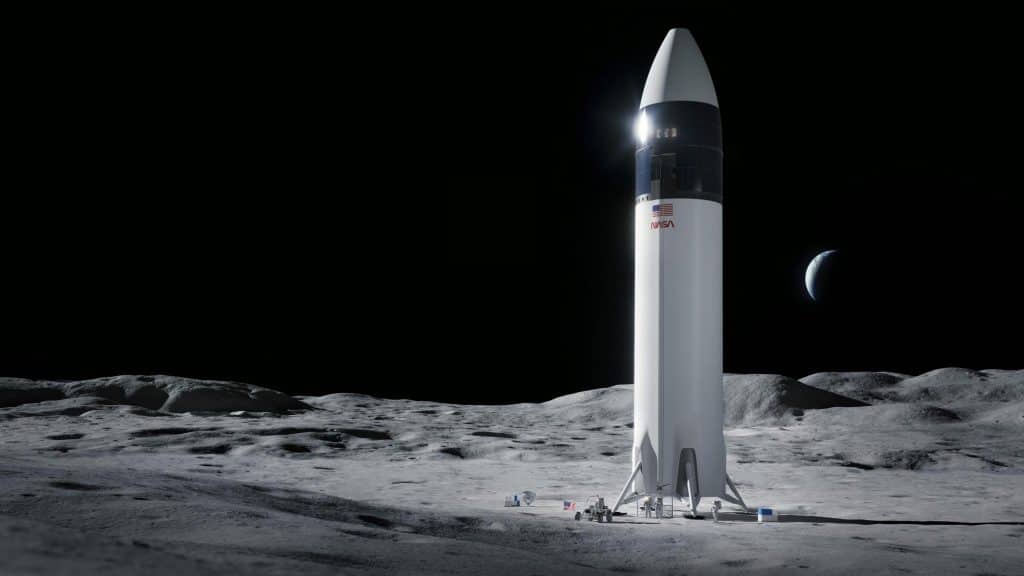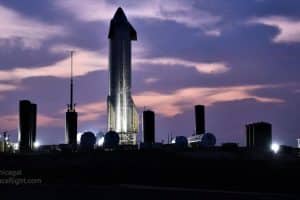A senior manager says that SpaceX could sustainably launch six or more Crew Dragons per year if the market for private missions grows large enough to demand it.
Benji Reed, Senior Director of Human Spaceflight Programs, offered his thoughts on the matter in a press conference following SpaceX’s successfully recovery of Crew Dragon and four private Axiom-1 astronauts from the Gulf of Mexico, marking the end of the first all-private mission to the International Space Station (ISS). Asked what kind of launch cadence SpaceX believes it could handle going forward, Reed stated that he “would love to see…half a dozen crew flights…or more” per year and believes that “SpaceX can sustain that [pace] if there’s a market for it.”
The question is an important one after a SpaceX executive confirmed to Reuters earlier this year that the company has already ended production of Crew Dragon after building just a handful of reusable capsules. With that fleet of four spacecraft, it hasn’t been clear how many crewed missions SpaceX can – or thinks it can – launch each year. To some extent, it’s long been expected that SpaceX would try to replace both Falcon rockets and Dragon spacecraft with Starship as soon as the next-generation fully-reusable rocket is ready.
However, without major redesigns or a new and heavily modified variant of the rocket’s upper stage, it’s difficult to imagine NASA transitioning its International Space Station astronaut launches from Dragon to Starship anytime soon. Even though Starship could feasibly revolutionize spaceflight and NASA has already contracted with SpaceX to build a version of the rocket to land NASA astronauts on the Moon, the one thing it’s hard to imagine the space agency ever compromising on is safety. Crew Dragon has a built-in launch escape system that allows the capsule to almost instantly whisk astronauts away from a failing rocket at any point before or during a launch.


Starship has no such escape system and SpaceX has no apparent plans to develop a variant of the crew-carrying ship with a comparable abort system. Because the Starship rocket’s second stage is the orbital spacecraft, crew cabin, and reentry vehicle, it simply isn’t possible for the current design of the next-generation vehicle to match the theoretical safety of Falcon 9 and Crew Dragon. CEO Elon Musk has discussed increasing the number of engines on Starship to allow it to escape from a failing booster but that would leave astronauts with no way to escape from the upper stage itself.
On top of Dragon’s fundamentally superior safety capabilities, Falcon 9 also has an extraordinary record of 125 consecutively successful launches. If NASA wouldn’t let Dragon launch its astronauts on Falcon 9 without an active escape system, it’s hard to imagine how many consecutive launch successes Starship would need before the agency would even think about retiring Crew Dragon.
This is all to say that SpaceX is likely going to be stuck operating Crew Dragon for the indefinite future as long as it’s too stubborn to develop a true launch escape system for Starship. Even though the recently announced Polaris Program aims to culminate in the “first flight of Starship with humans on board,” it’s likely that most private SpaceX crew launch customers will follow NASA’s lead.
Thankfully, even with four Crew Dragon capsules, it’s likely that SpaceX can manage significantly more than six crewed missions per year if the demand is there and commercial passengers – mirroring NASA – aren’t ready to risk flying on Starship. Already, SpaceX has successfully launched the same Crew Dragon capsule to orbit twice in 137 days. If SpaceX continues flying back-to-back NASA crew transport missions while Boeing’s Starliner inches through qualification, that will tie up two Dragons per year, limiting SpaceX to two launches for NASA and around four to five private astronaut launches per year.

Assuming Starliner finally reaches operational readiness and begins supporting every other NASA crew launch, SpaceX could feasibly launch one NASA mission and seven private missions (lasting up to two weeks each) per year by the end of 2023. Additionally, if SpaceX can improve Crew Dragon turnaround to 120 days, the fleet could support 10 crew launches per year. 90 days? 13 launches per year. Private missions to the ISS would add plenty of schedule constraints, reducing the total number of opportunities, but that’s a minor problem in comparison.
The only lingering technical concern, then, is the longevity of SpaceX’s Crew Dragon capsule fleet. SpaceX and NASA have initially certified each capsule for five missions, but after Crew-4’s April 27th launch, the fleet has already eaten up 7 of the 20 flights that limit permits. Assuming no additional demand for private launches, the remaining 13 ‘certified’ flights might last SpaceX through 2024. Sooner than later, with NASA’s blessing, it will either need to significantly increase the number of missions each capsule is certified to fly, build new capsules, or find a way to transition to Starship.





